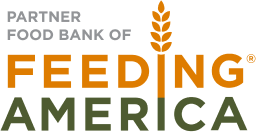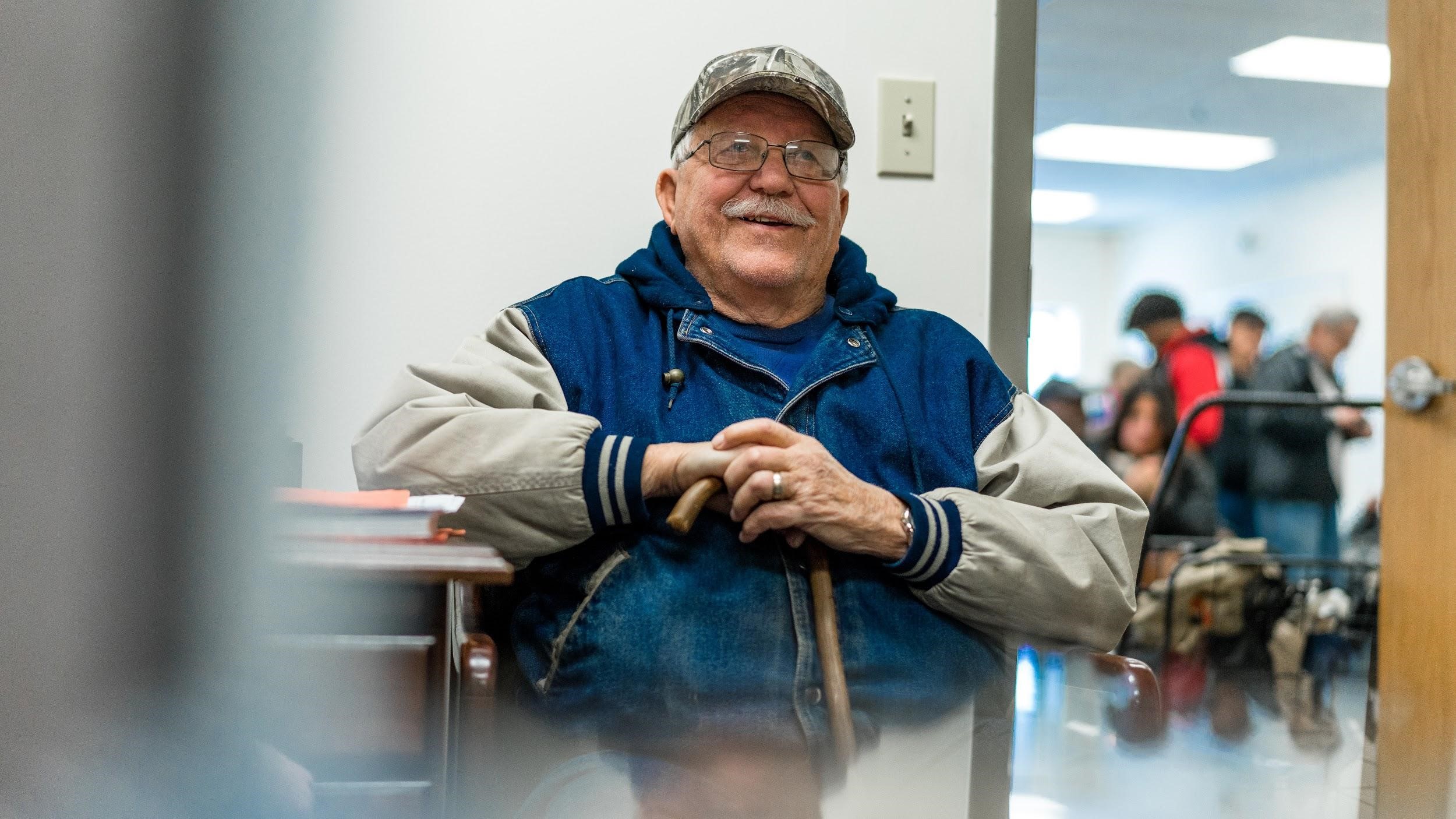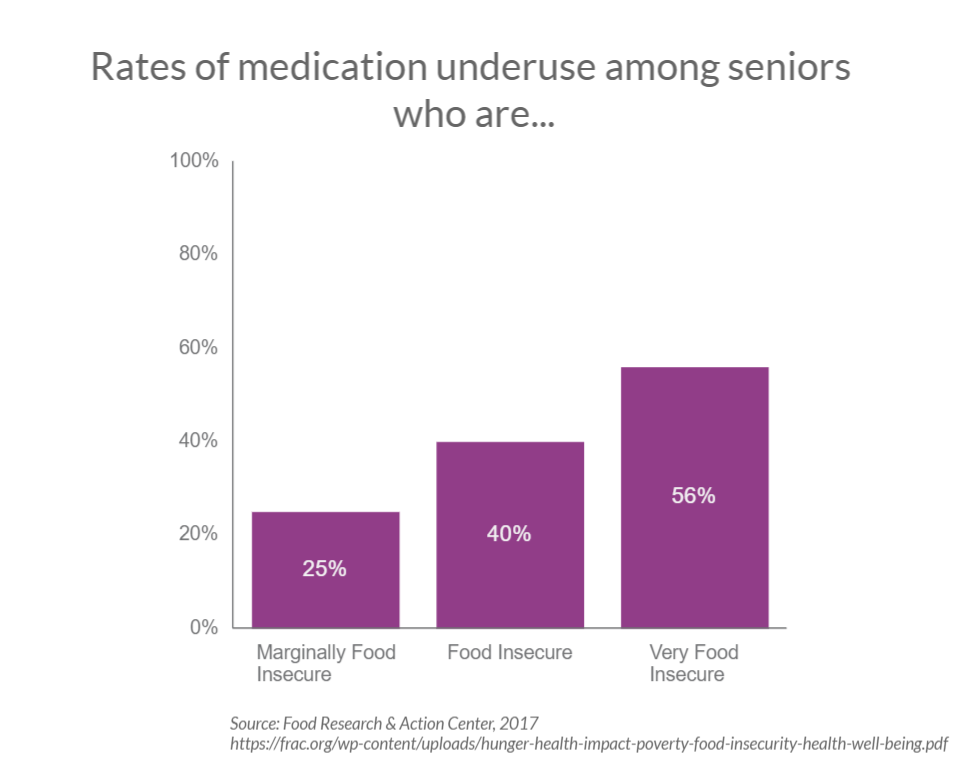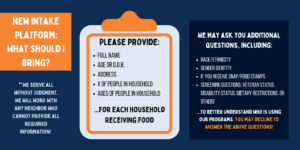For older adults, hunger hides in plain sight
Poverty, mobility challenges, and health expenses contribute to food insecurity among seniors. Here’s how federal programs and The Foodbank help out.
By: Caitlyn McIntosh, Development Manager and Emily Gallion, Grants & Advocacy Manager
Many of us already know that older adults are at higher risk of becoming seriously ill or dying from COVID-19. But the pandemic isn’t the only health crisis impacting older adults.
While Americans may not think of hunger as an issue that affects our seniors, they face higher rates of food insecurity than the general population. In Ohio, over one in ten seniors struggle with food insecurity.
This is of particular concern in the era of COVID-19. As we mentioned in a previous blog post, the availability and affordability of food can impact nearly every aspect of an individual’s health. The pandemic has disrupted senior’s food sources by forcing the closure of community centers and other programs older low-income adults use to access food.
With 28 percent of Americans living without any savings at all, any economic disruption or short-term emergency can make it difficult for individuals — including seniors, who often live on fixed-incomes — to obtain enough food to eat.
With aging comes dietary changes that require a higher intake of nutrients such as protein and calcium. Unfortunately, one in two seniors are at risk for malnutrition related to difficulty chewing and swallowing, losses or changes in appetite, and physical or mental health challenges.
Eating nutrient specific foods creates a financial burden on senior households who are already living with income constraints. The Commodity Supplemental Food Program, also known as the senior box program, was created by the USDA to meet the specific dietary needs of the senior population.
Congress appropriated $222.891 million for CSFP in fiscal year 2019 in order to provide this box at no cost to participants. The program is available in all 50 states to individuals living at or below 130 percent of the Federal Poverty line.
The Foodbank, Inc. distributes 1,020 boxes to seniors in Montgomery and Greene counties at 18 different distribution sites. To enroll in the senior box program, prospective recipients must fill out an application and meet the income requirements, both of which can be found on our website.
The pandemic has had a detrimental effect on families across the world, so it was no surprise to us when applications for the CSFP program came pouring in. Food banks have a limited caseload of seniors they are able to serve through this program each month. We reached our capacity for this program on March 12, 2020.
Once the program reaches capacity, we are still able to take applications and place them on a waitlist. As spots open up, they are filled on a first-come-first-serve basis. At the time of writing this post, there are still 95 people on the CSFP waitlist.
People who are waitlisted or declined from the program are still eligible to receive food through other Foodbank programs, however. We regularly refer individuals to their local pantry, Mobile Farmers Market, or our Drive Thru Food Pantry when they are not yet able to or not eligible to receive a CSFP box. We also bring boxes of non-federal food to our senior food box distributions so nobody goes home without something to eat.
Another federal program that benefits seniors is the Supplemental Nutrition Assistance program (SNAP), previously known as food stamps. SNAP is available to all adults who meet income guidelines of 130 percent of the federal poverty limit, or $12,760 annually for a household of one.
SNAP is an especially valuable tool in the fight against food insecurity because it allows recipients to have purchasing power. A senior who has specific dietary restrictions is able to purchase the food they need directly at the store. This approach has economic benefits as well: every $1 provided through SNAP generates $1.50-$1.80 in economic activity, according to 2019 calculations from the US Department of Agriculture’s Economic Research Service (2018 data).
However, there are particular challenges to using SNAP to combat hunger among our seniors. Participation in this program for adults over the age of 60 is particularly low. To apply for SNAP, potential recipients must use a phone or computer, print off and mail an application, or be able to find application assistance with a local agency.
Due in part to these obstacles, it is estimated that only 2 in 5 eligible seniors participate in the program, according to the National Council on Aging.
SNAP utilization rates are much lower for older adults in Ohio.
In addition to the barriers to apply, seniors who receive SNAP benefits must visit the grocery store to use them. This presents a risk of exposure to COVID-19 for vulnerable seniors, and can also be difficult for older adults who do not have transportation or who are living with a disability. About one in three food insecure seniors are disabled.
While all individuals who are food insecure face an increased risk of certain health outcomes, seniors face a unique situation. According to the Food Research & Action Center (FRAC), older adults living with food insecurity experience increased rates of a myriad of health problems, including asthma, congestive heart failure, hypertension, malnutrition, depression, and obesity resulting from consuming high-calorie/low nutrient food.
Older adults, who often live on fixed incomes and struggle with high medical costs, also utilize a number of dangerous coping mechanisms to stretch their budget, including forgoing necessary medications and preventative medical treatment, leading to higher medical costs and worse health in the long term.
Data from FRAC shows that older adults who are food insecure are much more likely to stretch their household budget by rationing or discontinuing prescribed medications.
Are you or somebody you know in need of assistance? The following resources may help:
- For more information about our CSFP Program, contact Katie Ly, Programs Manager, at KLy@thefoodbankdayton.org and 937-461-0265 x33, or Yiselle Heredia, Data Entry/CSFP Specialist at YHeredia@thefoodbankdayton.org and 937-461-0265 x19
- The Foodbank holds Mobile Farmers Markets in many locations in the community. Visit our website to view our schedule.
- Anyone in need of food assistance may also visit our weekly onsite drive thru. Hours can be found on our website as well as our social media channels
- For SNAP application assistance, contact Colette Looney, SNAP Coordinator, at CLooney@thefoodbankdayton.org and 937-461-0265 x37







No comment yet, add your voice below!